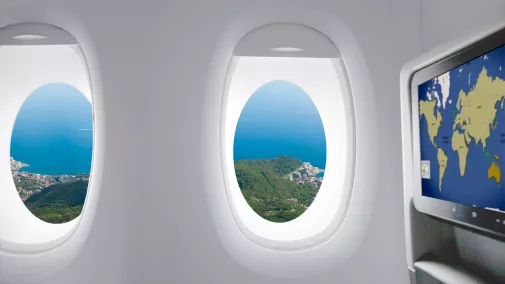
Cash and Cash Equivalents Worldwide through the Ages
published on 07.03.2023
People invented means of payment long before coins and banknotes. Everything that was rare, obtained with difficulty, or artfully produced could become the means of payment for a tribe, people or cultural circle. Trade, religion, war, and scarcity also produced imaginative currencies and pioneering innovations. Until today.

Mesopotamia: Silver Ingots
The oldest records of the use of money can be found in Mesopotamia, today’s Iraq. Cuneiform script texts report about payments in weighed silver. Metals could not be eaten, but they were durable. The nominal value was the weight, measured in units such as talents, minas, and shekels. The silver ingots were chopped up for weighing. Coins were derived from metals in Greek cities around 600 BC.

China: First Paper Money
Paper money first appeared in the city of Chengdu in the 11th century. During the Song Dynasty, metal coins became scarce due to the flourishing trade in East Asia. The emperors discovered paper money for war financing. Marco Polo told Europeans about paper money in 1276. The Mongolian ruler Kublai Khan forced its acceptance. However, his successors printed too much of it. Inflation was the order of the day.

Micronesia: Rai Stones
Rai stone wheels are still considered a means of payment on the Yap Atoll. They are up to four meters high and weigh five tons. Stealing them is not only difficult, but also useless. If their passing on is not documented orally, they continue to belong to their previous owner. Their value is also measured by their history, their laborious production, and their transport from the neighboring islands. This could sometimes be fatal.

Papua New Guinea: Shells
Shells and snail shells were widely used as means of payment in Africa, Asia, and the South Sea. The Tolai tribe in Papua New Guinea still uses the shell money taboo today: sea snail shells, threaded on strings. The value is based on the length. A chain of 400 shells is worth about one euro. Shell money is mainly used as small change and for ritual purposes.

Canada: Playing Cards
In the French colonies of North America, outstanding payments from Europe led to the issue of the first paper money of a Western government in 1685 – in the form of playing cards. Designed as promissory notes, the cards were provided with a monetary value and a seal by the governor. Although regular money soon arrived again, the card money was a great success and remained in circulation for several decades.

Ethiopia: Salt Bars
Salt has been highly valued as a seasoning and preservative as well as a natural money in many parts of the world. The Romans paid Legionnaires the wages partly in salt (the origin of the word “salary”). The Hanseatic League traded the spice in the Baltic Sea region. In Ethiopia, salt bars became a currency called, Amolé. A bar weighed just under a kilogram. The farther away the salt-quarrying site was, the more valuable the bars were.

Mexico: Cocoa Beans
In Central America, the Maya and later the Aztecs cultivated cocoa. Cocoa was known as a cult drink, but cocoa beans were more valuable as a means of payment. The value of the Aztec cocoa money can be determined precisely based on a price list from 1545. A gourd cost four cocoa beans, while a slave cost 100. The last Aztec ruler Montezuma is said to have owned a billion beans.

Africa: Iron Rods, Copper Crosses
Iron was traded as a commodity in Liberia and Sierra Leone for many centuries. Iron was cast in the shape of the kissi penny starting from 1880. The 15 to 40 cm long rods with characteristic T-end were of low value and were bundled. A cow cost about 100 bundles (2,000 rods). From the 13th to the 20th century, the Katanga Cross remained in the Congo as a means of payment: heavy copper bars in the form of a cross.

Mongolia: Talking JFK Coin
Mongolia issued a talking coin worth 500 Tugrik, the Mongolian currency, in memory of US President John F. Kennedy in 2007. At the push of a button, it reproduces an excerpt from the famous Kennedy speech in West Berlin in 1963, “Ich bin ein Berliner”. The coin was quickly out of stock. However, the few coins that are still in circulation are now said to no longer reproduce sound.

Palau: Fragrance and Water Coins
The island state in the Pacific is known for exotic coin embossing with colorful butterfly motifs or pearls. Palau has also coined the world’s first aromatic coin. It smells like coconut. In 2007, a silver coin with a representation of the Virgin Mary was issued. A small phial of water from French Lourdes is integrated in it. Actually too nice to spend, nevertheless: all coins are legal tender.







